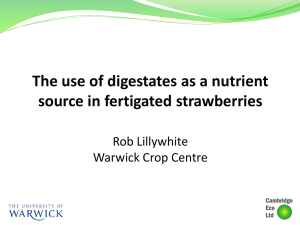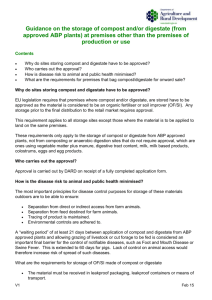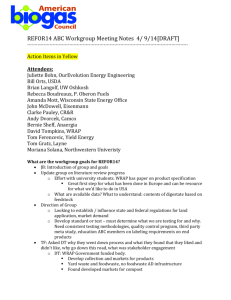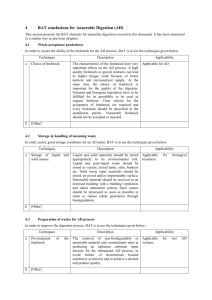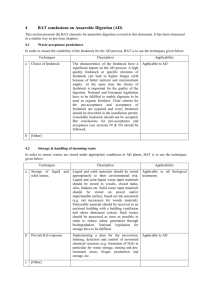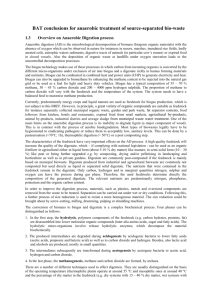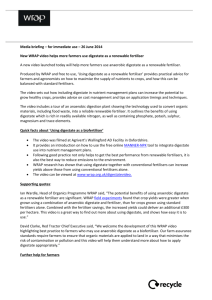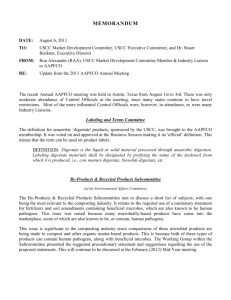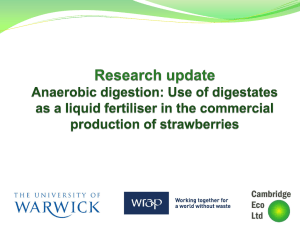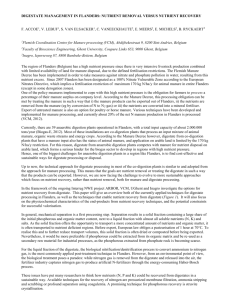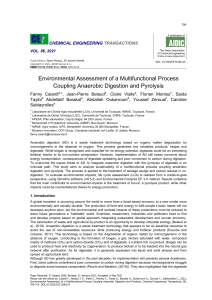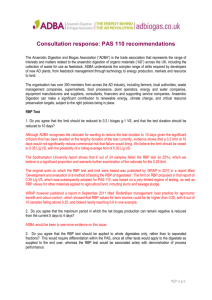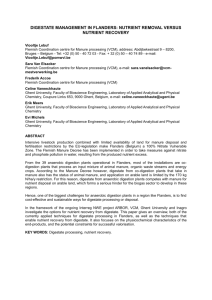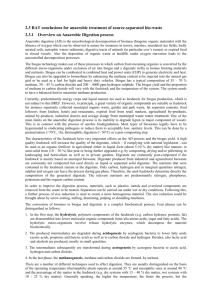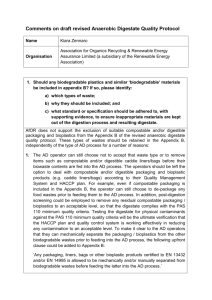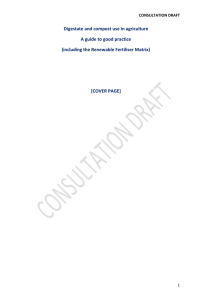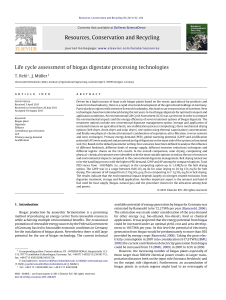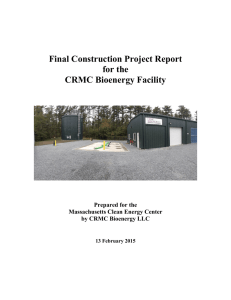Development of a digestate treatment scheme for agricultural
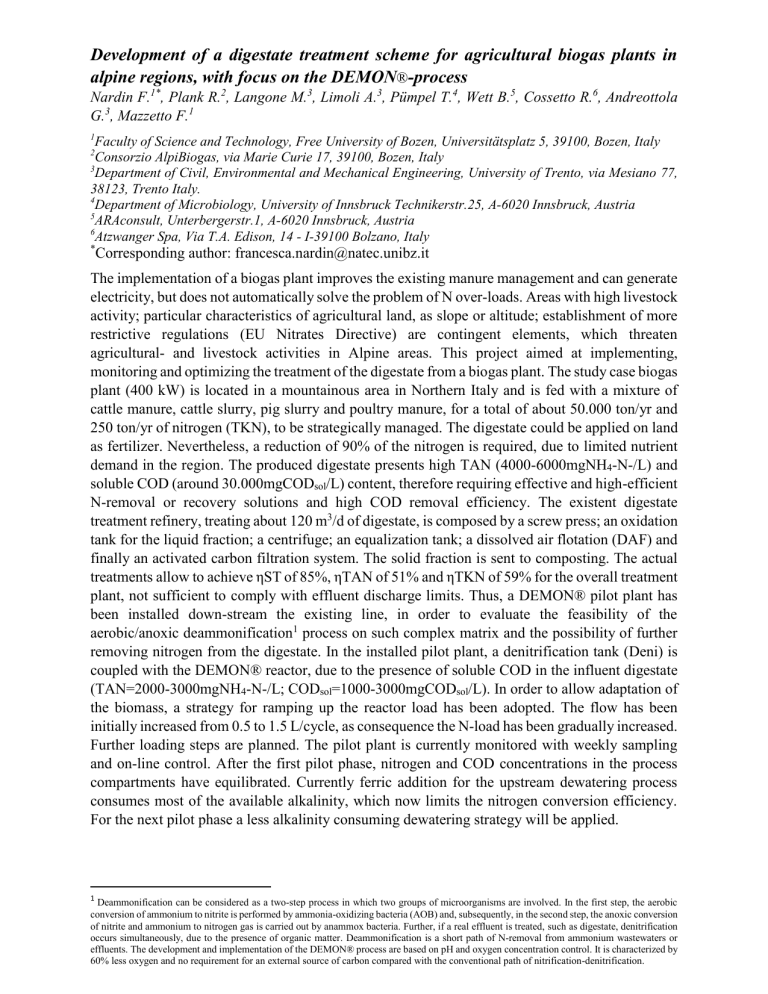
Development of a digestate treatment scheme for agricultural biogas plants in alpine regions, with focus on the DEMON
®
-process
Nardin F.
1* , Plank R.
2 , Langone M.
3 , Limoli A.
3 , Pümpel T.
4 , Wett B.
5 , Cossetto R.
6 , Andreottola
G.
3
, Mazzetto F.
1
1
Faculty of Science and Technology, Free University of Bozen, Universitätsplatz 5, 39100, Bozen, Italy
2
Consorzio AlpiBiogas, via Marie Curie 17, 39100, Bozen, Italy
3
Department of Civil, Environmental and Mechanical Engineering, University of Trento, via Mesiano 77,
38123, Trento Italy.
4
Department of Microbiology, University of Innsbruck Technikerstr.25, A-6020 Innsbruck, Austria
5
ARAconsult, Unterbergerstr.1, A-6020 Innsbruck, Austria
6
Atzwanger Spa, Via T.A. Edison, 14 - I-39100 Bolzano, Italy
*
Corresponding author: francesca.nardin@natec.unibz.it
The implementation of a biogas plant improves the existing manure management and can generate electricity, but does not automatically solve the problem of N over-loads. Areas with high livestock activity; particular characteristics of agricultural land, as slope or altitude; establishment of more restrictive regulations (EU Nitrates Directive) are contingent elements, which threaten agricultural- and livestock activities in Alpine areas. This project aimed at implementing, monitoring and optimizing the treatment of the digestate from a biogas plant. The study case biogas plant (400 kW) is located in a mountainous area in Northern Italy and is fed with a mixture of cattle manure, cattle slurry, pig slurry and poultry manure, for a total of about 50.000 ton/yr and
250 ton/yr of nitrogen (TKN), to be strategically managed. The digestate could be applied on land as fertilizer. Nevertheless, a reduction of 90% of the nitrogen is required, due to limited nutrient demand in the region. The produced digestate presents high TAN (4000-6000mgNH
4
-N-/L) and soluble COD (around 30.000mgCOD
sol
/L) content, therefore requiring effective and high-efficient
N-removal or recovery solutions and high COD removal efficiency. The existent digestate treatment refinery, treating about 120 m
3
/d of digestate, is composed by a screw press; an oxidation tank for the liquid fraction; a centrifuge; an equalization tank; a dissolved air flotation (DAF) and finally an activated carbon filtration system. The solid fraction is sent to composting. The actual treatments allow to achieve ηST of 85%, ηTAN of 51% and ηTKN of 59% for the overall treatment plant, not sufficient to comply with effluent discharge limits. Thus, a DEMON® pilot plant has been installed down-stream the existing line, in order to evaluate the feasibility of the aerobic/anoxic deammonification
1
process on such complex matrix and the possibility of further removing nitrogen from the digestate. In the installed pilot plant, a denitrification tank (Deni) is coupled with the DEMON® reactor, due to the presence of soluble COD in the influent digestate
(TAN=2000-3000mgNH
4
-N-/L; COD sol
=1000-3000mgCOD sol
/L). In order to allow adaptation of the biomass, a strategy for ramping up the reactor load has been adopted. The flow has been initially increased from 0.5 to 1.5 L/cycle, as consequence the N-load has been gradually increased.
Further loading steps are planned. The pilot plant is currently monitored with weekly sampling and on-line control. After the first pilot phase, nitrogen and COD concentrations in the process compartments have equilibrated. Currently ferric addition for the upstream dewatering process consumes most of the available alkalinity, which now limits the nitrogen conversion efficiency.
For the next pilot phase a less alkalinity consuming dewatering strategy will be applied.
1
Deammonification can be considered as a two-step process in which two groups of microorganisms are involved. In the first step, the aerobic conversion of ammonium to nitrite is performed by ammonia-oxidizing bacteria (AOB) and, subsequently, in the second step, the anoxic conversion of nitrite and ammonium to nitrogen gas is carried out by anammox bacteria. Further, if a real effluent is treated, such as digestate, denitrification occurs simultaneously, due to the presence of organic matter. Deammonification is a short path of N-removal from ammonium wastewaters or effluents. The development and implementation of the DEMON® process are based on pH and oxygen concentration control. It is characterized by
60% less oxygen and no requirement for an external source of carbon compared with the conventional path of nitrification-denitrification.

